Although Earth is often referred to as the only planet in the Solar System where life thrives ideally, there are still places on our planet with extremely harsh living conditions.
1. Oymyakon, Russia
Oymyakon is a small town in the Sakha Republic, northeastern Russia. It is known as the coldest inhabited place on Earth. The average temperature here in winter is -51°C, with occasional drops to -71°C. In winter, the outside air can be deadly; just breathing can freeze your lungs.
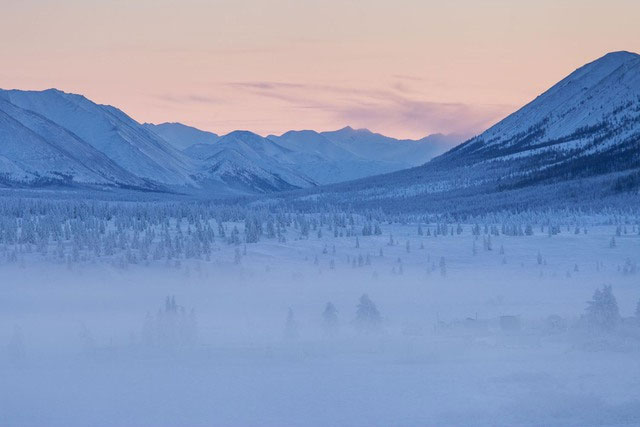
The average winter temperature in Oymyakon is -51°C, with some instances dropping to -71°C. (Photo: Nature)
Due to the extreme weather, crops cannot grow, so the local diet mainly consists of reindeer milk, horse meat, fish, and frozen foods. Even the water pipes frequently freeze due to the cold, forcing residents to build outdoor bathrooms. Locals do not wear fabric but instead use merino wool and animal fur to make clothing.
According to Insider, the current population of Oymyakon is about 500 people. They have lived here since the 1920s to 1930s. Initially, it was just a stopover for reindeer herders. Life here is quite normal, like many places in the world. However, when temperatures drop to -58°C, all activities come to a halt.
2. Dallol, Ethiopia
Dallol is located 483 km from Ethiopia’s capital and is recognized as one of the hottest places on Earth. Temperatures here frequently exceed 38°C, peaking at nearly 63°C. You can stand still for just a few minutes, and your shoes might melt due to the extreme heat. The reason Dallol is so hot is that it sits on an active volcano.
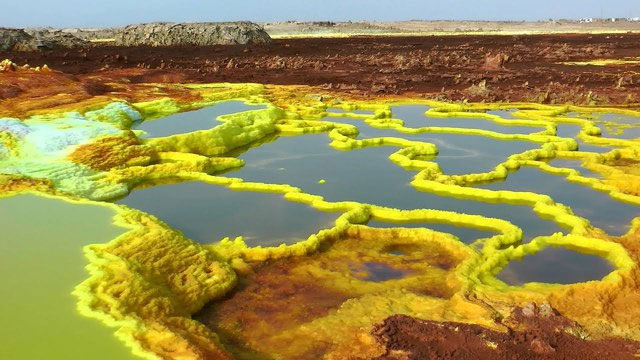
Dallol often has temperatures above 38°C. (Photo: Nature)
Surprisingly, despite the heat, the Afar people have made Dallol their home. To adapt to the heat, they created a special paint that reflects sunlight. They wait until night when it is cooler to move around the area to gather resources. The Afar typically consume cow and goat milk to replenish electrolytes and prevent dehydration.
3. Mawsynram, India
Mawsynram is located in northeastern India near the Bangladesh border. According to the Guinness World Records, Mawsynram is confirmed as the wettest place on Earth where people still live. The average rainfall here is over 25,400 mm per year. The rainy season in Mawsynram lasts from June to September, with daily rainfall exceeding 1.5 m. In Mawsynram, it is common for clouds to enter homes.
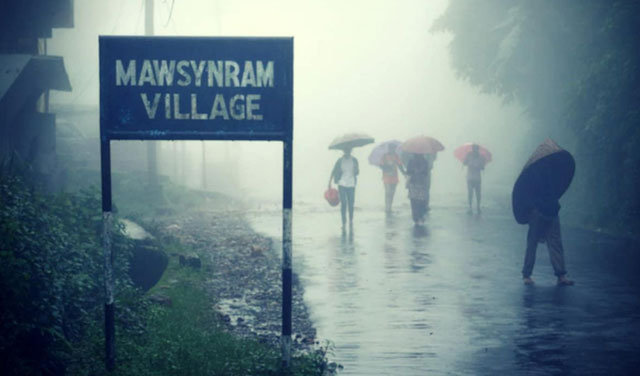
The average rainfall in Mawsynram is over 25,400 mm per year. (Photo: Nature)
The locals use tree roots to make bridges and bamboo to create raincoats. Although it takes a long time to build these root bridges, they can withstand the area’s damp weather. Residents also use grass to line their roofs to soften the sound of rain. However, Mawsynram does not always experience continuous rain; in winter, the town can become so dry that water shortages are common.
4. Atacama Desert, Chile
The Atacama Desert is located in northern Chile and a small part in southern Peru. Atacama is one of the driest regions on Earth. Historical records show that from 1570 to 1971, the Atacama Desert received no significant rainfall. The Guinness World Records has recognized Atacama as the “driest desert in the world.” NASA and the National Geographic Society also consider Atacama the driest desert globally.
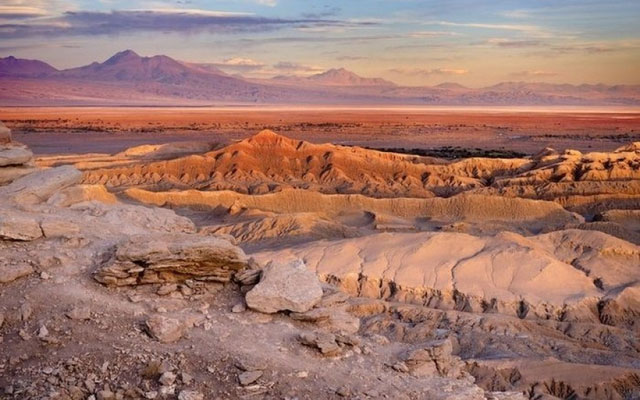
The Atacama Desert is so dry that cacti cannot grow. (Photo: Nature)
This desert has an average annual rainfall of only 25 mm. Furthermore, even cacti cannot thrive in this desert. Decomposition does not occur for anything in this desert due to the extremely dry air, preventing oxidation of metal materials, and even meat can remain preserved indefinitely here.
However, people still inhabit this desert. They are the Atacameño tribe, who live concentrated in an area called San Pedro de Atacama. The Atacameño have ingeniously developed a method to harvest water from fog by setting up nets to catch moisture from the air.
5. Tristan da Cunha, UK
Tristan da Cunha is an island located in the South Atlantic, roughly midway between South Africa and South America, and it is a British Overseas Territory. This island is known as the most remote inhabited place in the world, as it is over 2,700 km from the nearest mainland area, Cape Town, South Africa. The journey from the nearest point to here takes about six days, with approximately 60 ships visiting the island each year.
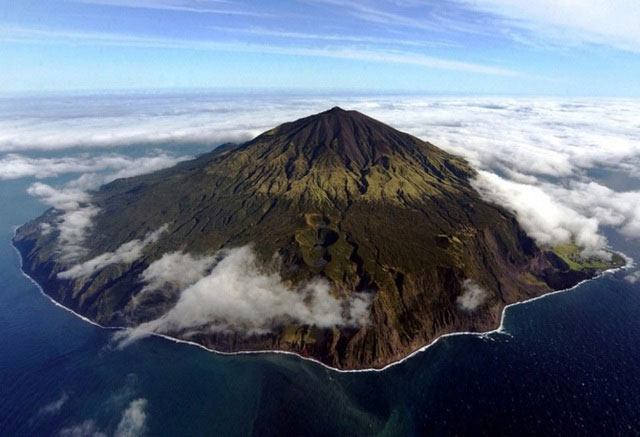
Tristan da Cunha is known as the most remote inhabited place in the world. (Photo: Nature)
The only town on Tristan da Cunha is Edinburgh of the Seven Seas, built on flat land more than 2,000 meters from the summit of the Queen Mary volcano. Currently, the island’s population is around 300 people. They make a living through fishing and raising livestock. Due to the island’s volcanic activity, only potatoes and beans can be cultivated as food.




















































